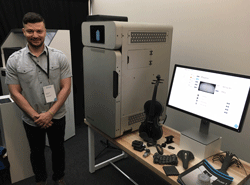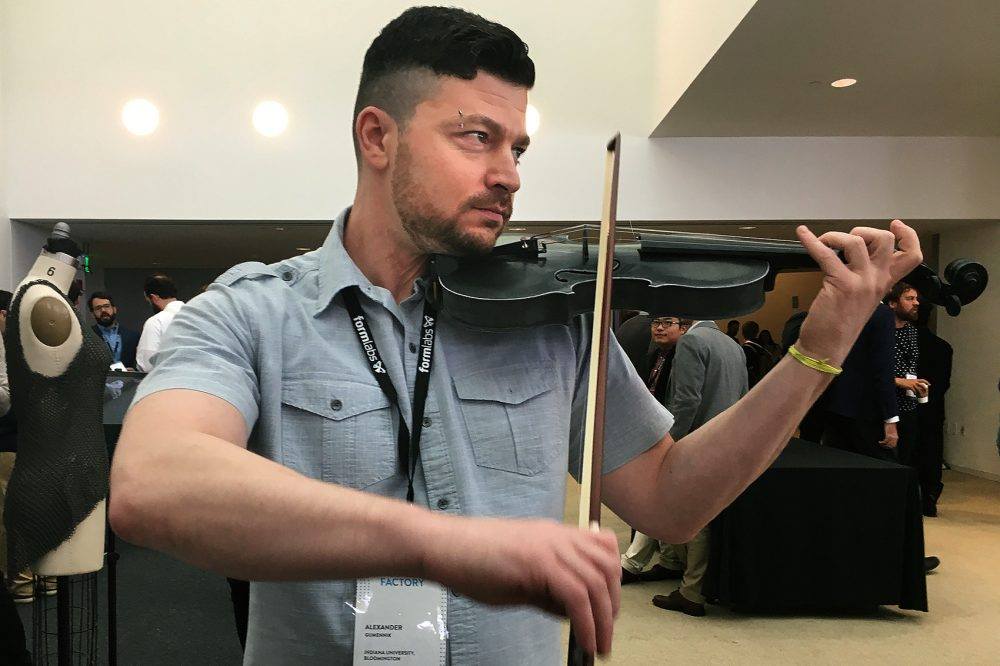Alexander Gumennik, an assistant professor of intelligent systems engineering at the School of Informatics and Computing, is part of a group that has developed a revolutionary 3D printer that will provide professional printing capabilities at a fraction of the current cost.
Gumennik, who also is the director of ISE’s Fibers & Additive Manufacturing Enabled Systems (FAMES) Laboratory, was part of a presentation in Boston at MIT’s Digital Factory, which is an event focusing on digital manufacturing. The conference brought together experts from the field of digital manufacturing to explore innovative designs and products. Gumennik worked with Formlabs, a leader in high-resolution 3D desktop printing, to develop the optics for Fuse 1, a laser-sintering powder-bed printer that turns a raw powdered material into a solid.
“This is the first time in my life that I’ve seen something that I’ve built in my own hands becoming a commercial product,” Gumennik says. “It’s something I’ve engineered, and it’s a useful product that serves its consumers.”
Fuse 1 can create complex nested and overhanging structures, such as moving mechanical assemblies, as one piece using nylon, which is strong, durable, and functional. Gumennik developed the optical module that is at the heart of the printer, including the laser and the beam shaping and controlling optics, such as the lenses, mirrors, optical windows, and the galvanometers. He also designed and packaged the optical modules as well as the tuning, troubleshooting, and maintenance of the optics on the research and development prototypes.



